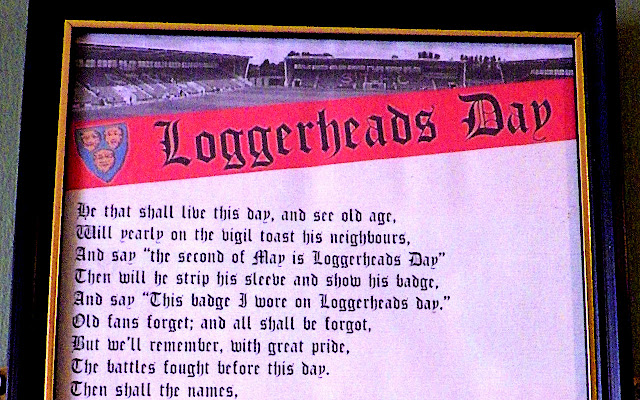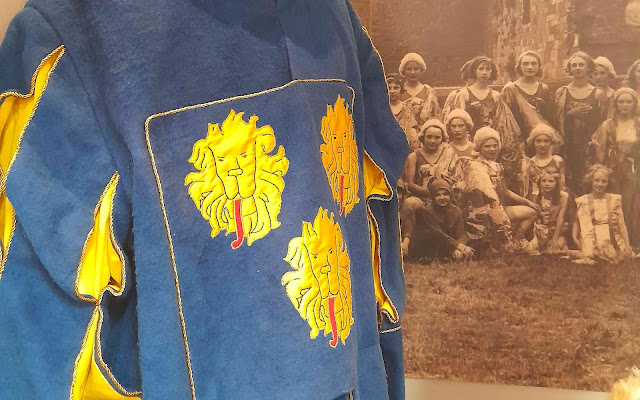
There are few greater signs of fealty than having one’s body tattooed with the badge of the institution that commands one’s loyalty… Here we have a particularly good instance: this leg will carry the loggerheads-badge of Shrewsbury Town FC for many many years.
Fans fought hard for the loggerheads badge when the club wanted to do away with it - and the fans won!
Curiously, the gentleman to whom the leg belongs is not alone in this type of homage. On summer days, when shorts are ubiquitous, one can spot quite a few of them in and around the club’s Meadow Stadium.
It's interesting to note that, as well as the loggerheads motto Floreat Salopia (Let Shrewsbury Flourish), our man has the words 'Proud Salopian' tattooed too. That phrase has its own, separate, but equally fascinating story...
This limb was photographed at The Prince Of Wales pub, a place where fans gather to celebrate their passion. Thanks to MC for the sighting.
+
To comment on this post, just use the Comments field down this page or email us direct.
To get an email alert into your inbox every time we make a new post (about once a week), just click 'Subscribe & Follow' (at the top of the column to the right on this page) and just fill in the form















